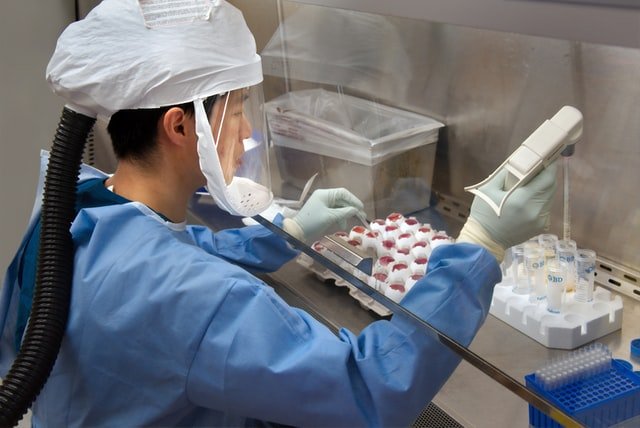Lymphoma Non-Hodgkin
- Biotexus
- July 18, 2022
About The Lymphatic System
The lymphatic system is made up of narrow tubes and clusters of tiny bean-shaped structures called lymph nodes that are found all over the body. The belly, groyne, pelvis, chest, underarms, and neck have the biggest groupings of lymph nodes.
The lymphatic system transports lymph, a colourless fluid containing lymphocytes, a kind of white blood cell. Lymphocytes are immune cells that aid in the fight against pathogens in the body. Types of lymphocytes include
- B-lymphocytes, also called B cells, which make antibodies that fight bacteria and other infections
- T-lymphocytes, also called T cells, which destroy viruses and foreign cells and trigger the B cells to make antibodies
- T-lymphocytes which destroy certain invaders, such as viruses, cells infected by viruses, and some cancer cells
Other parts of the lymphatic system include the:
- Spleen, an organ under the left rib cage, which makes lymphocytes and filters the blood.
- Thymus, an organ under the breastbone.
- Tonsils, located in the throat
- Bone marrow the spongy red tissue inside bones that makes
- White blood cells, which fight infection
- Red blood cells, which carry oxygen throughout the body
- Platelets, which help the blood clot
About non-Hodgkin lymphoma
Non-Hodgkin lymphoma (NHL) is a term used to describe a category of lymphatic malignancies. These malignancies have a variety of symptoms and indications, as well as physical examination results and therapies.
Because lymphatic tissue may be found in nearly every portion of the body, NHL can begin practically anywhere and spread to almost every organ. The lymph nodes, liver, spleen, or bone marrow are frequently affected. The stomach, intestines, skin, thyroid gland, brain, or any other organ of the body might all be affected.
Risk Factors
The specific etiology of NHL is unknown, and most people who are afflicted with the disease will never know. The following factors, on the other hand, may increase a person’s chances of developing NHL:
Infections caused by bacteria: Specific infections are linked to certain forms of NHL. For example, an infection with the bacterium Helicobacter pylori is suspected to be the cause of mucosa-associated lymphoid tissue (MALT) lymphoma of the stomach. If this lymphoma is detected early enough, it may disappear if the infection is treated with antibiotics. Other kinds of MALT lymphoma, such as those affecting the lungs, tear glands, and skin, can be caused by infections.
Transplantation of organs: Organ transplant patients are more likely to develop NHL. This is due to the medications patients must take to suppress immune system function and protect the transplanted organ from rejection
Previous cancer therapy: Previous therapy for other forms of cancer with particular medications may raise the chance of NHL. Chemical exposure. Certain substances have been linked to an increased risk of NHL. Pesticides, herbicides (such as Agent Orange), and petrochemicals are examples of such substances.
Genetic factors. There are currently no widely acknowledged genetic tests that consistently predict a person’s chance of developing NHL or identify hereditary risk factors for NHL. These potential hazards are being investigated in ongoing clinical research.
Vaccines. The link between vaccines and lymphoma is still uncertain and contentious. Several studies have discovered a link between Bacillus Calmette–Guerin (BCG) immunisation and an increased risk of NHL. BCG is a TB vaccination that is used to treat some forms of bladder cancer. However, studies have linked other vaccines, such as those for smallpox, cholera, yellow fever, influenza, measles, tetanus, and polio to a lower risk of NHL.
Symptoms
The specific etiology of NHL is unknown, and most people who are afflicted with the disease will never know. The following factors, on the other hand, may increase a person’s chances of developing NHL:
General symptoms:
- Enlarged lymph nodes in the abdomen, groin, neck, or underarms
- Enlarged spleen or liver
- Fever that cannot be explained by an infection or other illness
- Weight loss with no known cause
- Sweating and chills
- Fatigue
Examples of symptoms related to a specific tumor location:
- A tumor in the abdomen can cause a stretched belly or pain in the back or abdomen.
- An enlarged spleen may cause back pain and a feeling that the stomach is full
- A tumor in the groin may cause swelling in the legs
- A tumor in the underarms may cause swelling in the arms
- If the lymphoma spreads to the brain, there may be symptoms similar to those of a stroke.
- A tumor in the center of the chest may press on the trachea and cause coughing, chest pain, difficulty breathing, or other respiratory problems
Treatment
There are 4 main treatments for NHL:
- Chemotherapy
- Immunotherapy
- Targeted therapy
- Radiation therapy
Often, patients receive a combination of these treatments. Occasionally, the doctor and patient may also consider surgery or bone marrow/stem cell transplantation.



















